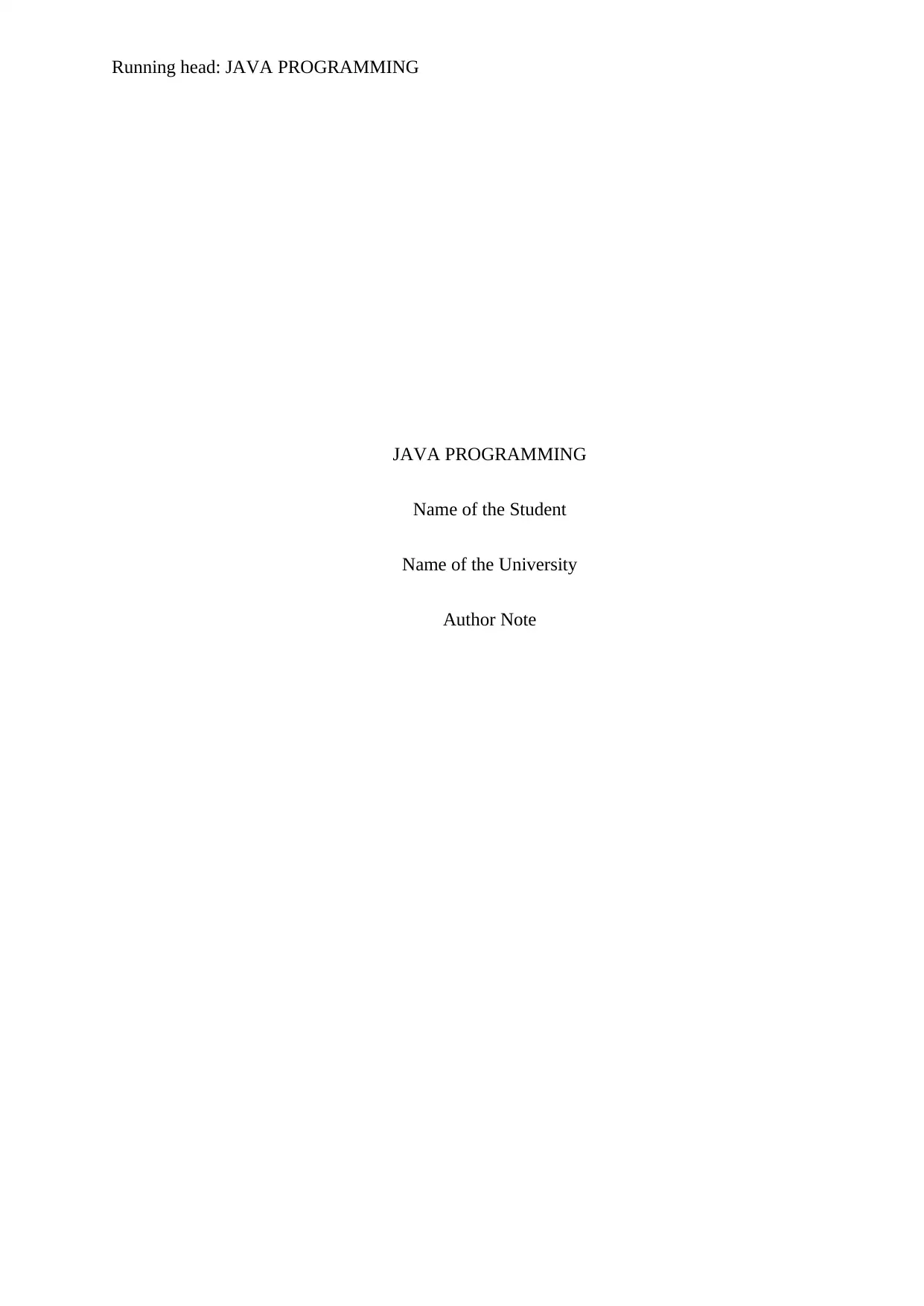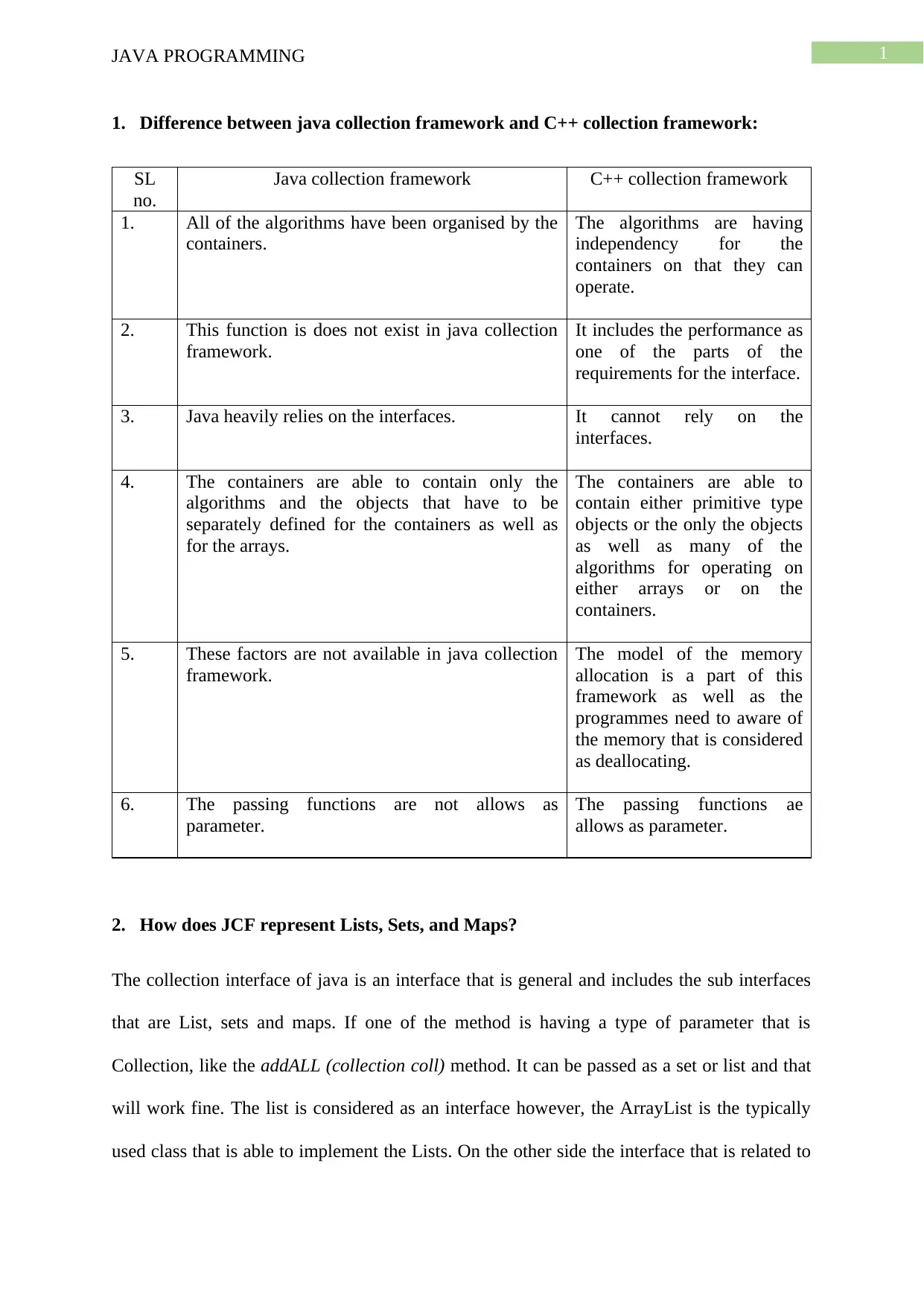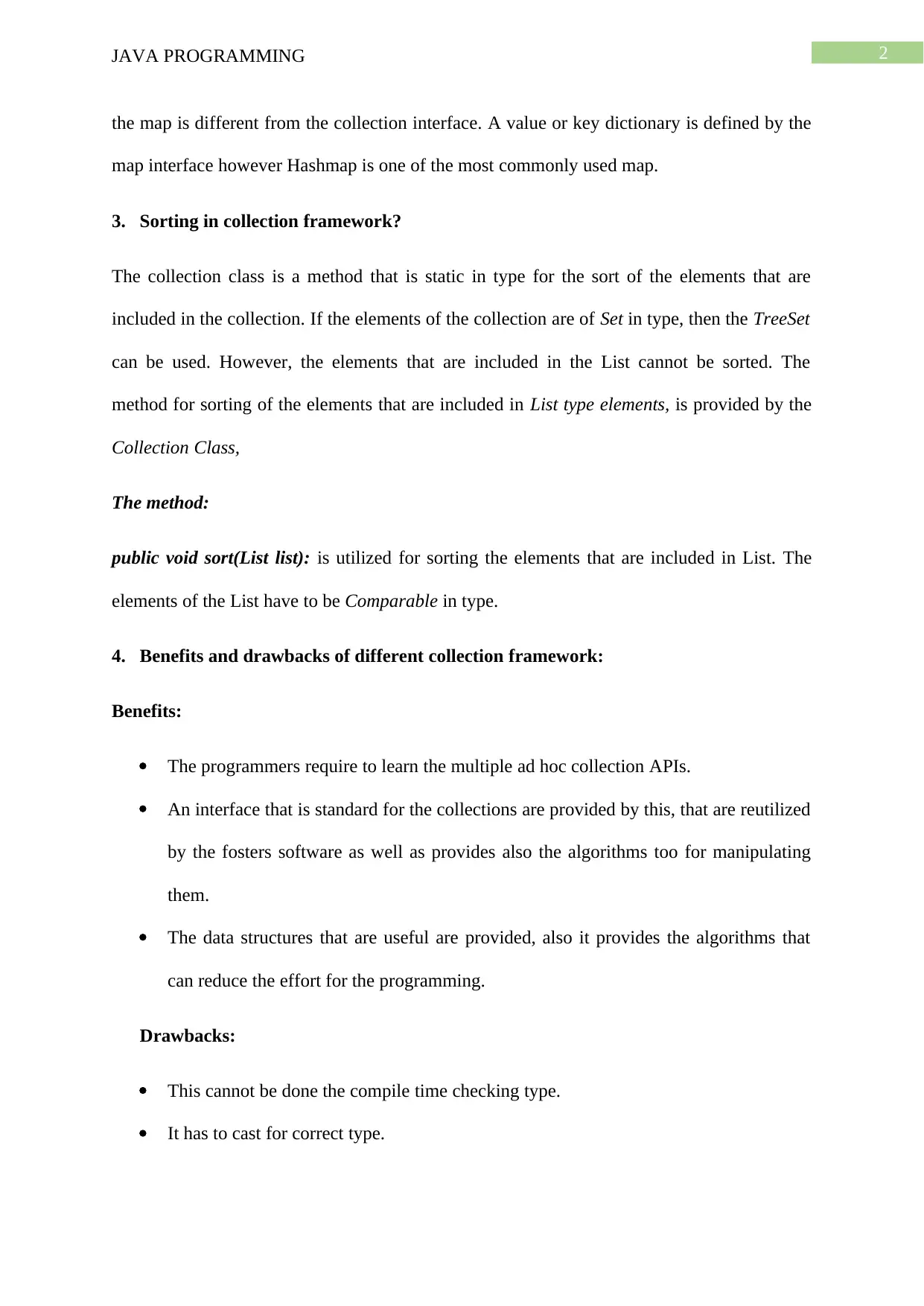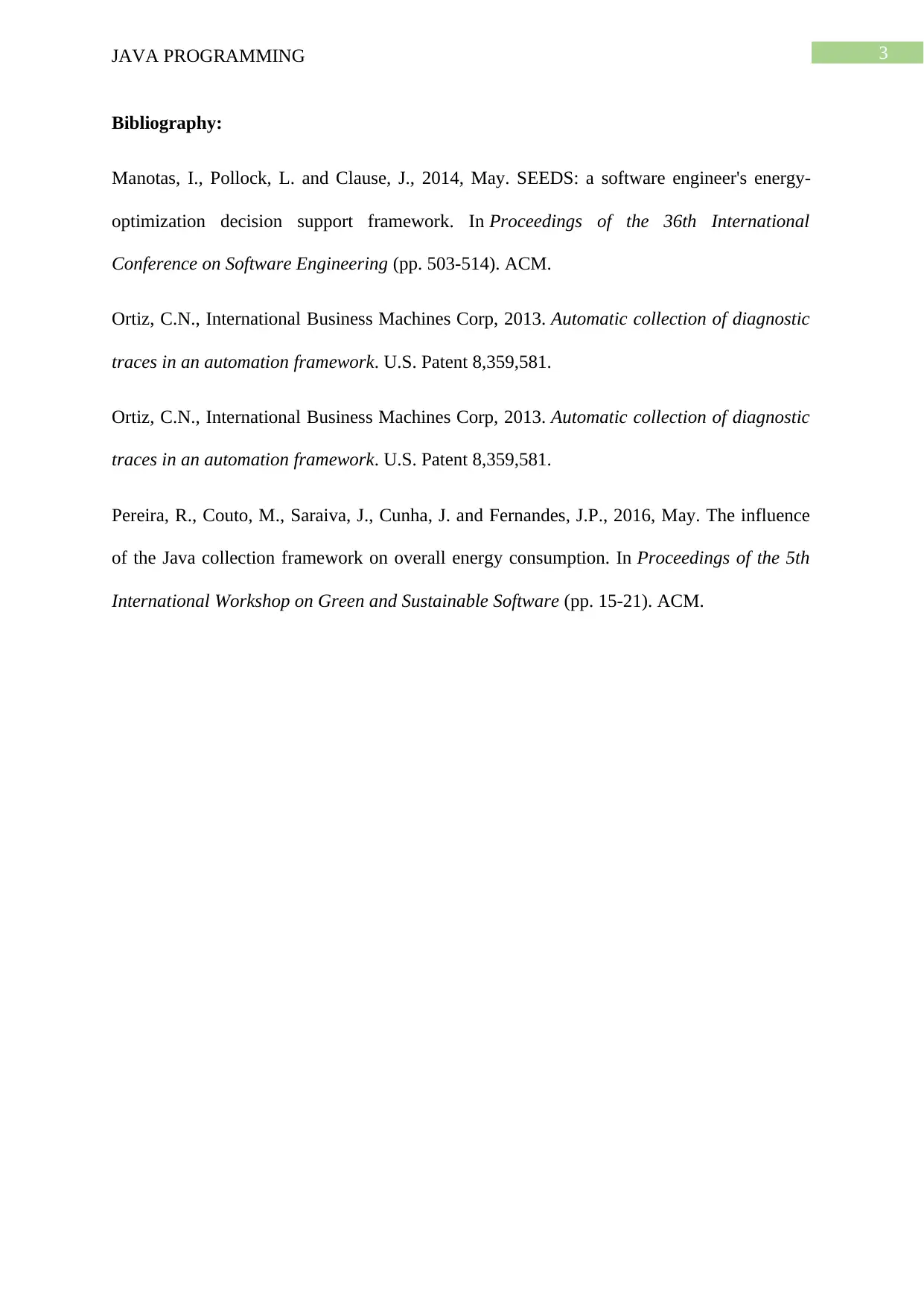Java Programming Assignment: Collection Framework Comparison
VerifiedAdded on 2023/01/17
|4
|747
|51
Homework Assignment
AI Summary
This Java programming assignment provides a detailed analysis of the Java Collection Framework (JCF), comparing it to the C++ collection framework. The assignment explores the representation of Lists, Sets, and Maps within JCF, highlighting the use of interfaces like Collection, List (ArrayList), and Map (HashMap). It also covers sorting mechanisms within the framework, discussing the use of the `sort()` method from the `Collections` class and the `TreeSet` for sorting set elements. Furthermore, the assignment outlines the benefits and drawbacks of using the Java Collection Framework, such as providing standard interfaces and useful data structures while lacking compile-time type checking. The assignment includes a bibliography with relevant research papers and patents. The provided solution is designed to help students understand and solve similar Java programming assignments, making it a valuable resource for those studying computer science and related fields, available on Desklib.
1 out of 4











![[object Object]](/_next/static/media/star-bottom.7253800d.svg)